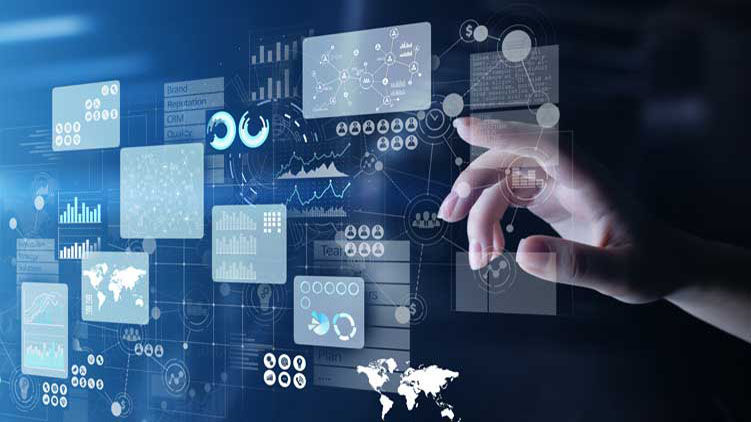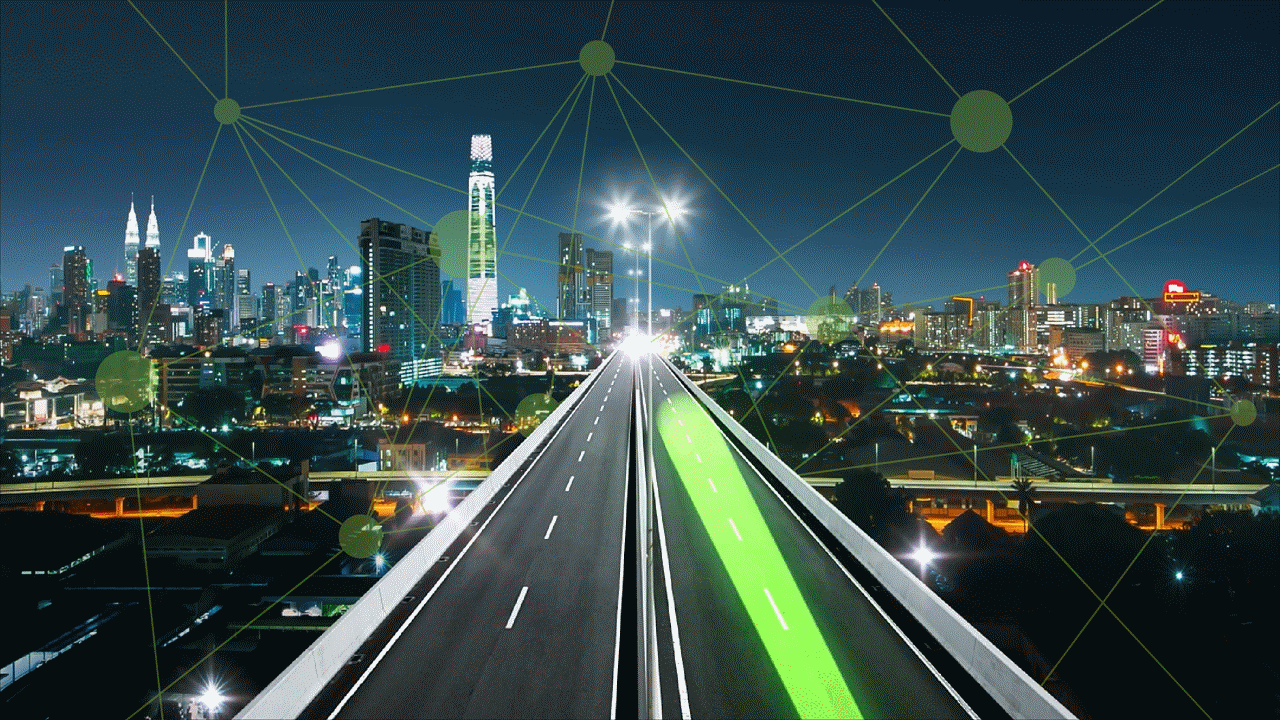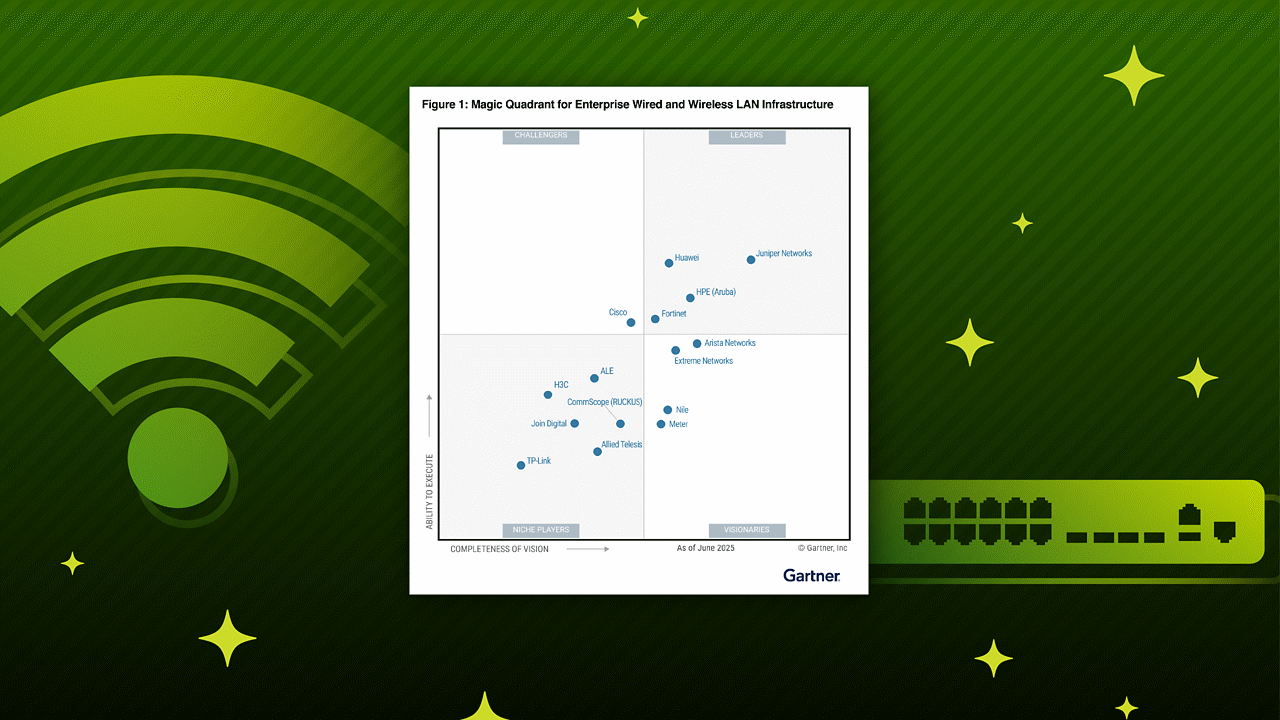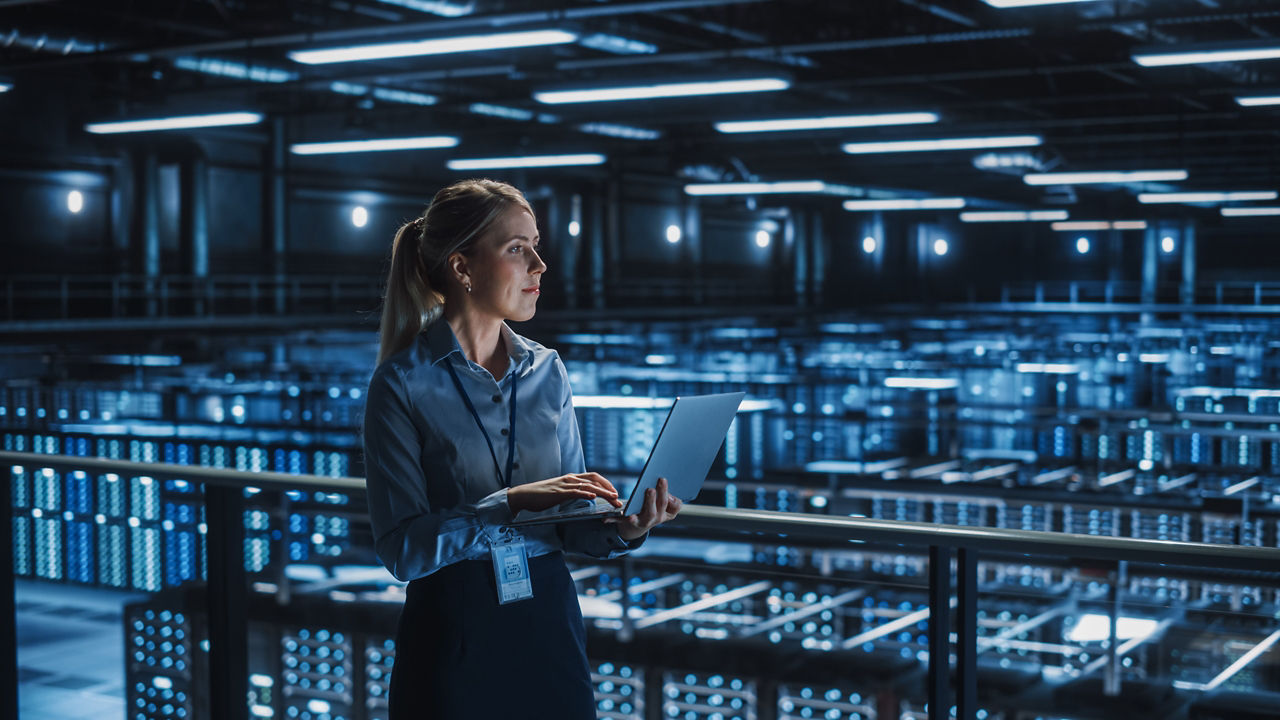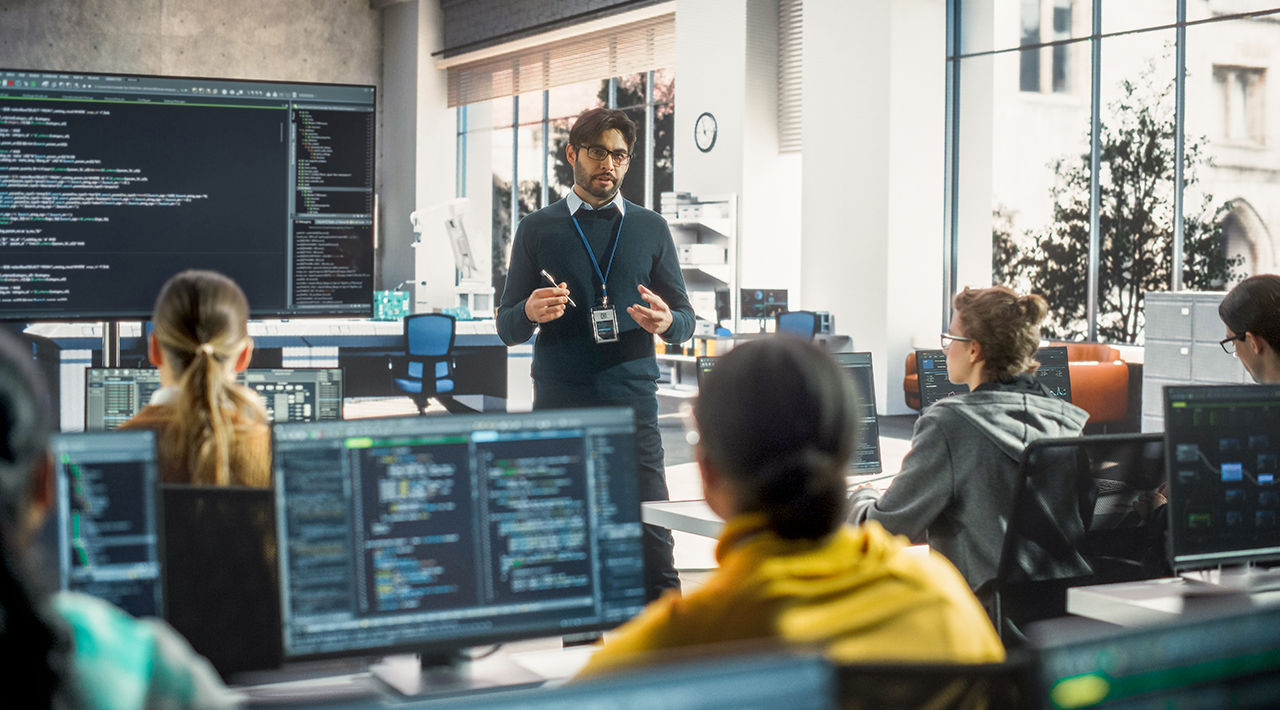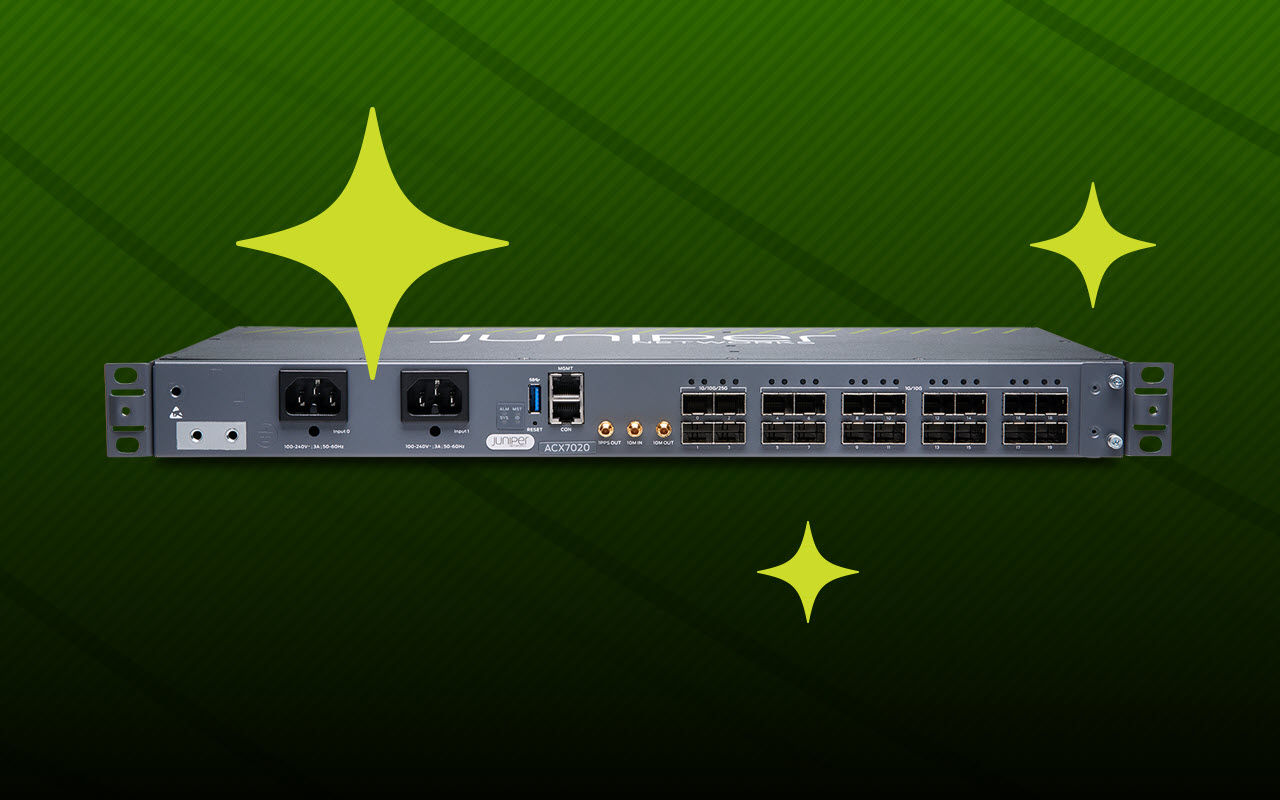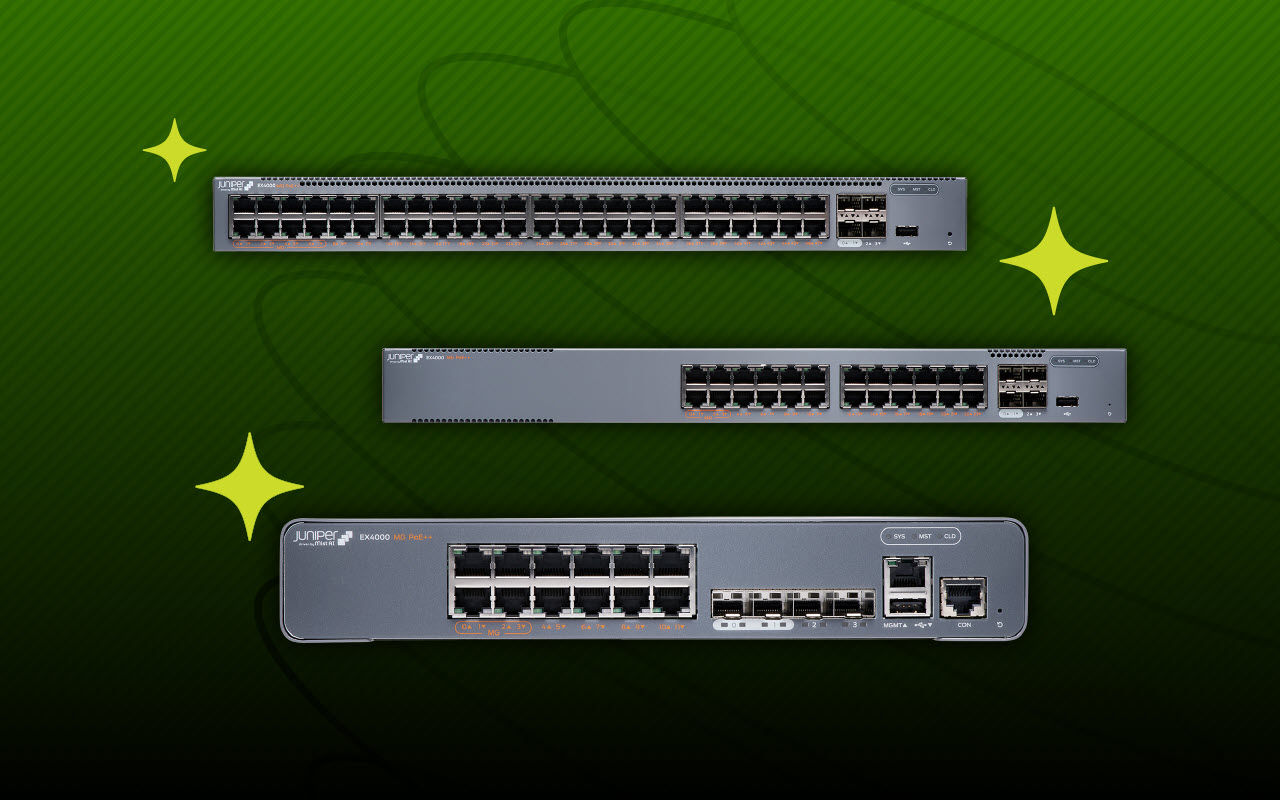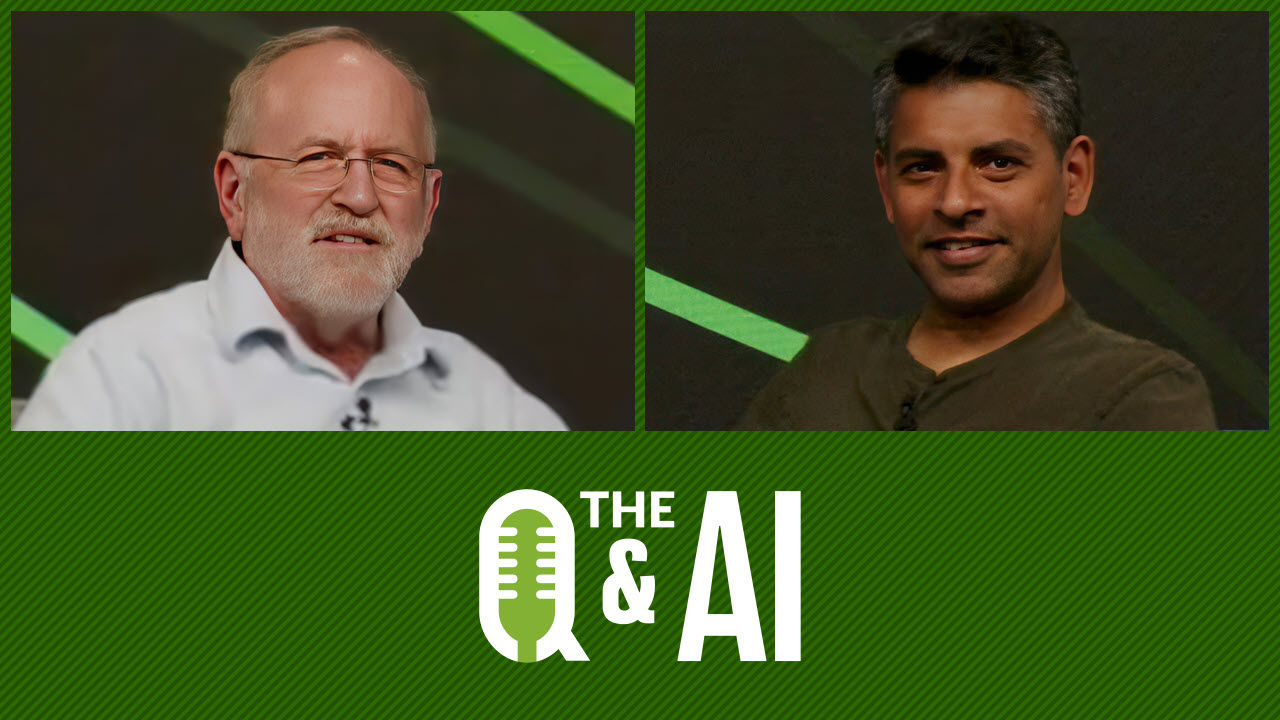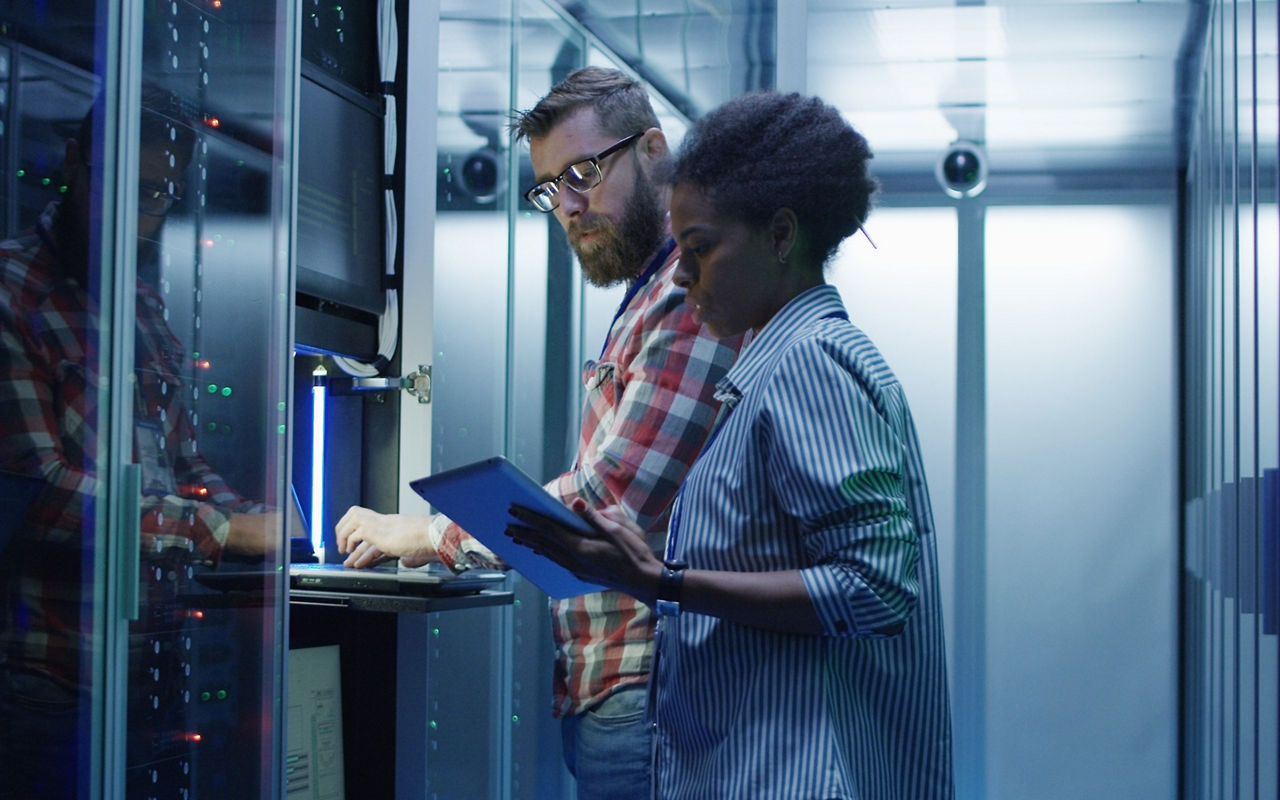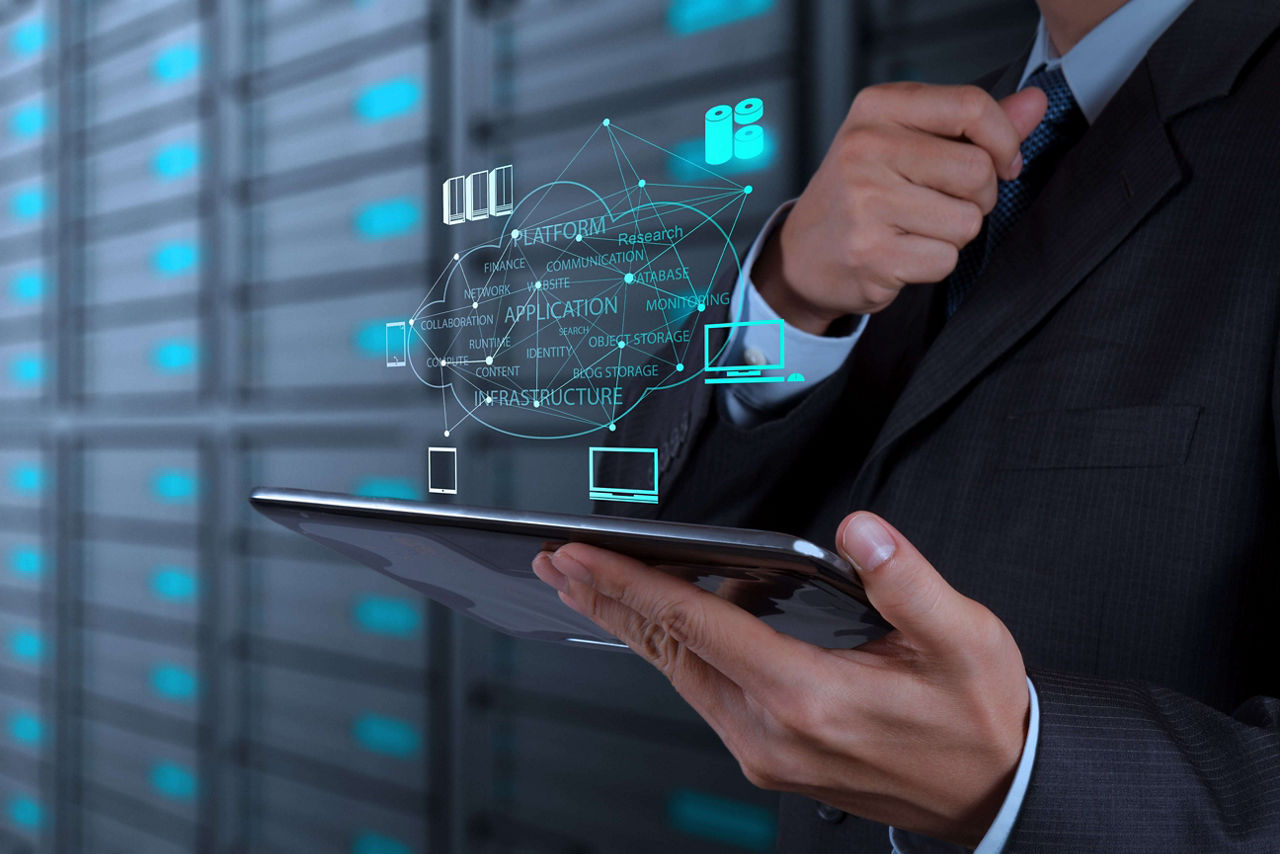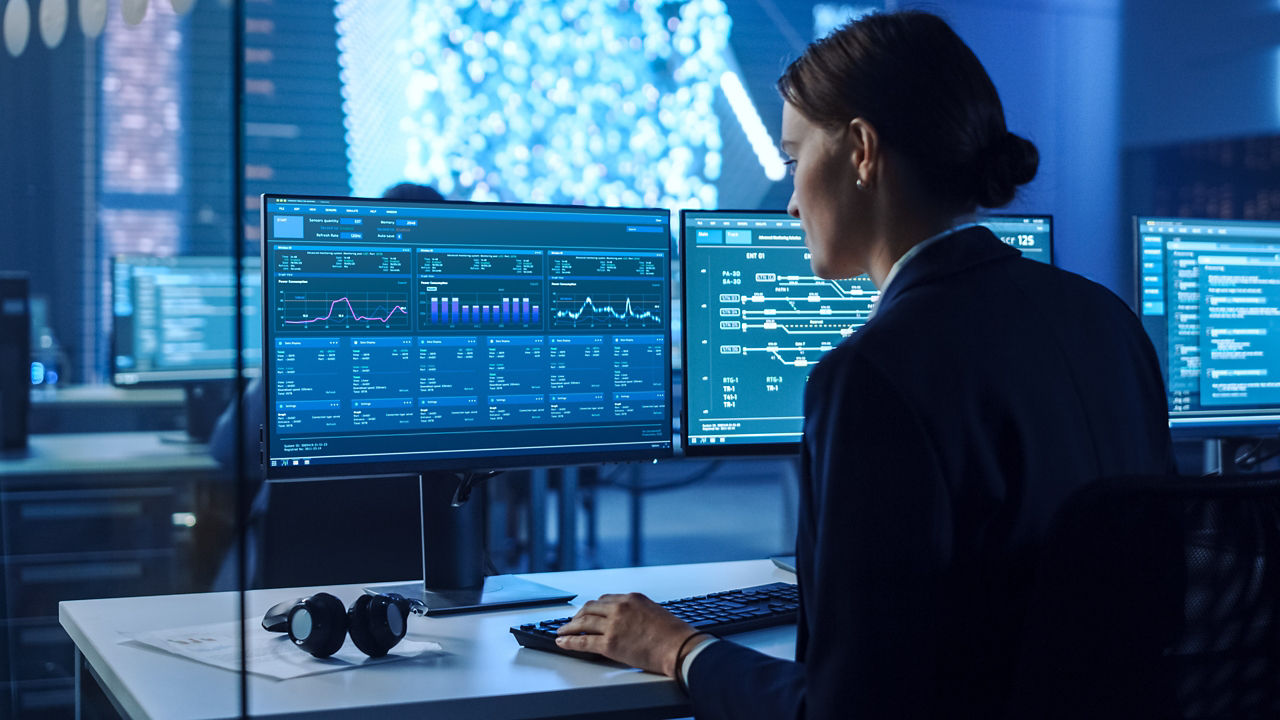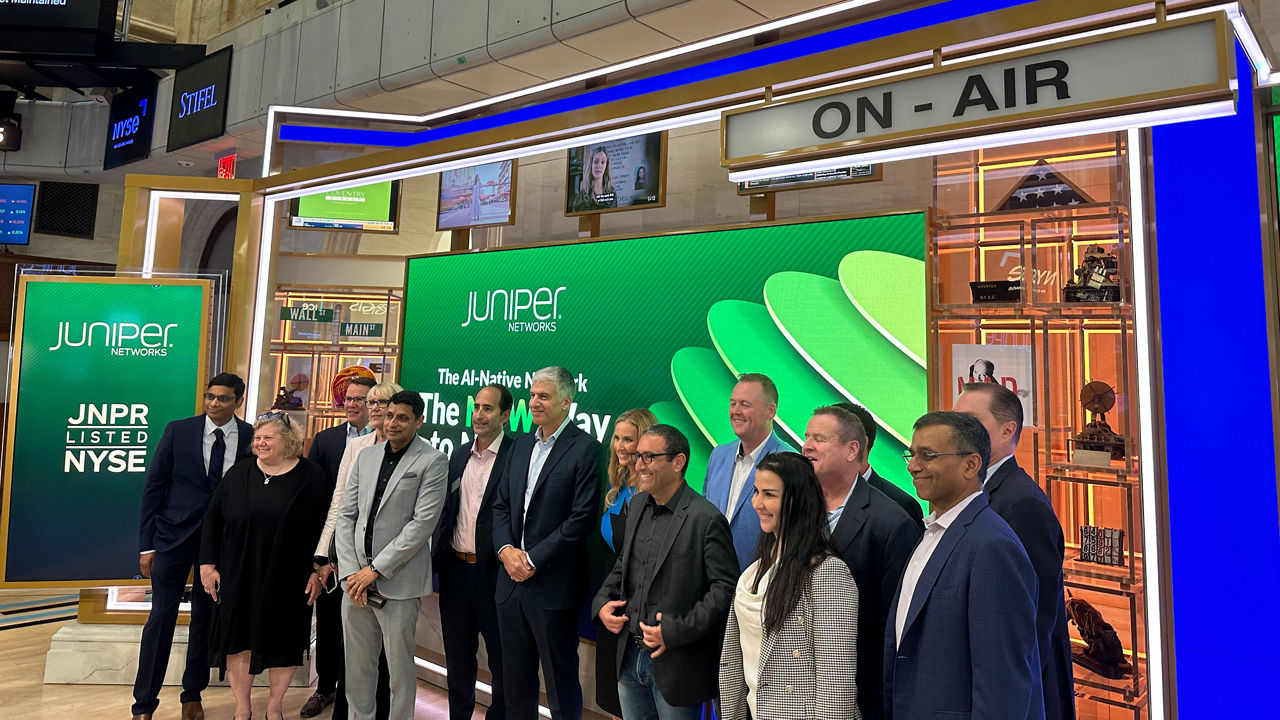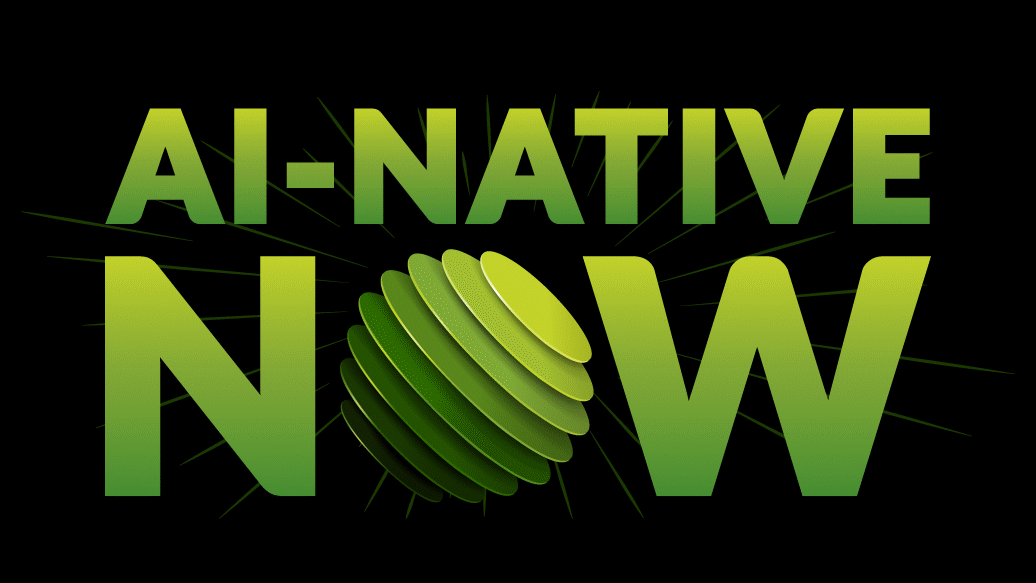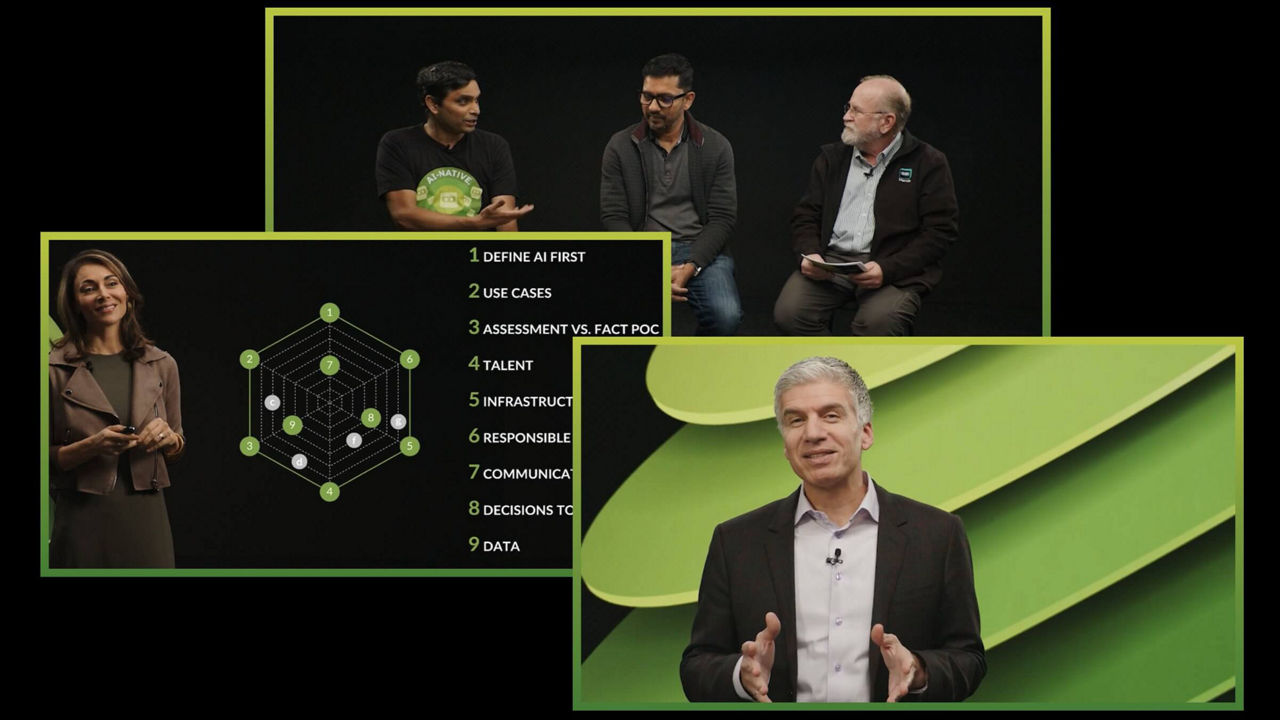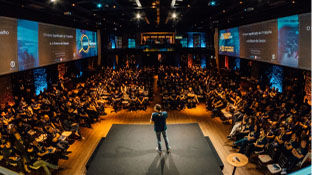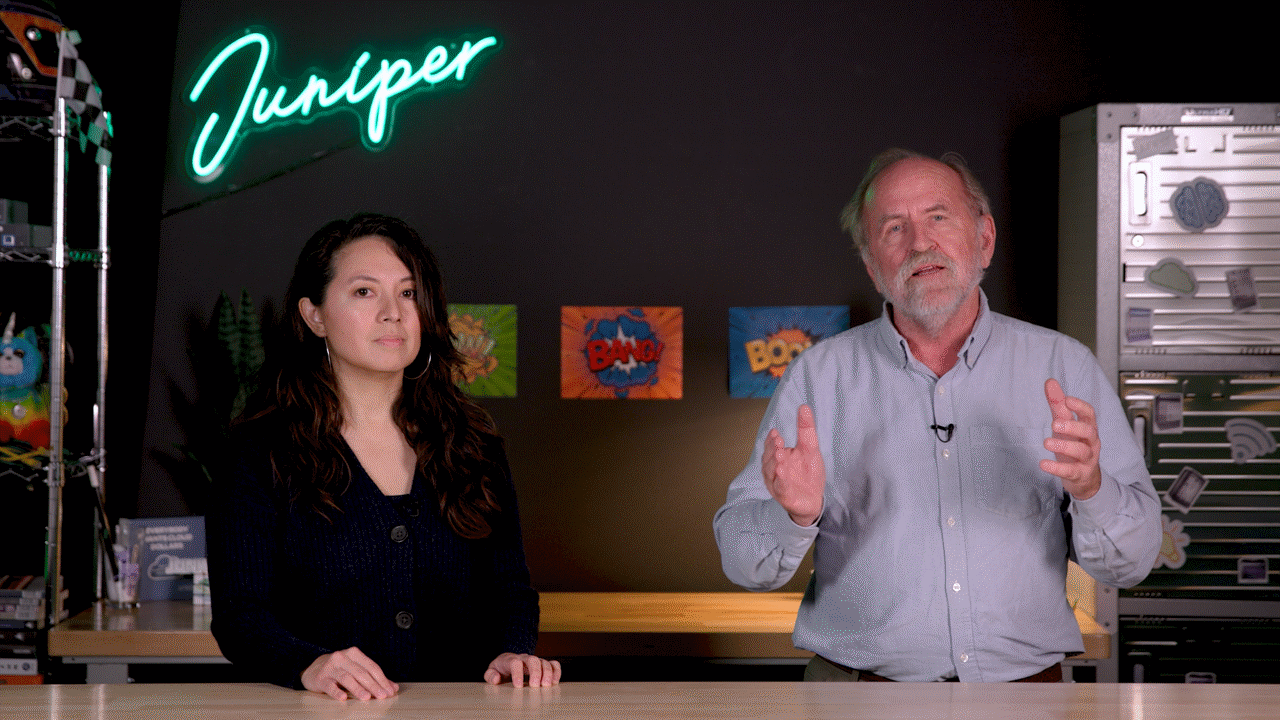Real AI: A Reality Check Beyond the Hype


In this video, watch as Juniper Networks’ Chief AI Officer, Bob Friday cuts through the buzzwords and misleading narratives the ‘other guys’ are touting, and offers a comprehensive and eye-opening exploration of what makes proven artificial intelligence... real.
1:15 Defining AI for IT and AIOps
3:50 Creating AI from the Ground Up
6:05 The Importance of Good Data with Good AI
9:13 Zoom & Microsoft Teams Integrated with Marvis
10:59 The Data Science Toolbox
13:19 Self-Driving Network Outlook
15:10 What is a Virtual Network Assistant (VNA)?
17:40 What’s Next for AI & VNAs?
20:06 Leveraging AIOps and Real AI
22:40 Integration between AI Systems
24:18 Advice on Building AI
25:34 Closing Statements
You’ll learn
What to expect from AI in Action on-demand
Who is this for?
Host

Guest speakers

Transcript
0:03 [Music]
0:12 hello everybody Welcome to real AI a
0:15 reality check beyond the hype I'm Jeff
0:17 Aaron VP of Enterprise marketing at
0:19 Juniper and we have Bob Friday GPI
0:21 officer good to be here Jeff yeah
0:23 awesome this is actually a little bit
0:25 strange because Bob and I have had so
0:26 many conversations throughout the years
0:28 but usually there's a bottle of wine in
0:30 the middle for those that don't know Bob
0:31 is a Vintner and actually a pretty good
0:33 one I must say actually I'm not I'm not
0:35 just saying that yeah one one Barrel
0:37 wine a year and yeah we wine and air
0:39 both topics near to my heart so we turn
0:41 this into the wine show and we do work
0:43 that analogy into a lot of our
0:44 conversation which is good but obviously
0:46 real AI is what we're going to talk
0:47 about here and uh you know what I think
0:49 we really want to just peel back the
0:50 curtain a little bit uh you know there's
0:52 a lot of AI washing out there so what
0:54 goes into an AI system how does it
0:56 differentiate how do you build one and
0:58 obviously you're the guy who did it uh
1:01 in fact we we go back and that we worked
1:03 at airspace which was a Wireless company
1:04 bought by Cisco and then we worked at
1:07 Mist which I think some people thought
1:09 was a Wireless company and it was but it
1:11 also was an AI company right we were the
1:13 first to kind of do AI for it so I guess
1:15 maybe we start off how would you define
1:17 AI for it and AI Ops and and why in 2014
1:21 When Miss was founded was that the time
1:23 to really bring this to Market yeah you
1:25 know people ask me that and you know for
1:27 me I look at Ai and AI Ops you know it
1:30 really for me is the next step in the
1:32 evolution of automation right you know
1:34 and if you look what AI really stands
1:36 for it usually means doing something on
1:37 part of the human right and I see that's
1:40 what happening with networking right
1:41 right we're now trying to build a
1:43 solution that can actually do something
1:45 on par with a it expert yeah you know
1:48 and we were just talking about Watson
1:49 right and that was one of The
1:50 Inspirations for missing Jeopardy right
1:52 Watson Jeopardy 2011. that was like you
1:55 know if they can build something that
1:56 can play Jeopardy yeah you know we
1:58 should be able to build something they
1:59 can play networking Jeopardy so what
2:01 happened 24 like why was that the time
2:03 where all of a sudden you you said this
2:05 is something we can build into a system
2:06 you know there's a couple things that
2:08 happened in back in the 2014 time frame
2:10 I mean one was you know I was working at
2:12 a big company you know and we were
2:14 listening to customers back in the early
2:16 days of Wi-Fi when Wi-Fi went from nice
2:18 to have to a must-have but then it went
2:19 to business critical you know and we
2:21 started to hear from big companies that
2:23 before they were going to put anything
2:24 on their Network they wanted to make
2:26 sure that you know controllers stopped
2:28 crashing they wanted to you know keep up
2:30 with their digital transformation
2:31 project you know so they wanted code
2:33 released every yeah every weeks and not
2:36 years and probably most importantly they
2:39 started to want to make sure that when
2:40 they put a critical app on that thing
2:42 they want to make sure the app or the
2:43 user experience was really going to work
2:44 yeah it was a kind of a shift from
2:46 focusing on the network experience
2:47 passing traffic uptime to really
2:49 focusing on the user experience yeah you
2:51 know so we still have to keep everything
2:52 green right APS router switches all that
2:55 but beyond that it was really more
2:57 important to keep the applying to Cloud
2:59 experience up and running and I would
3:00 say the other thing if you look what
3:01 interesting happened in 2014 you know if
3:03 you look at the Google search statistics
3:05 2014 was the year that
3:08 AI really went from kind of a research
3:10 topic you know to a reality yeah it
3:13 became real and I think there was a
3:14 perfect storm of things that happened
3:16 back then yeah it was like Cloud gpus
3:18 you know we got access to low-cost
3:21 compute storage Amazon Google all that
3:24 stuff became real yeah models became
3:26 bigger you know tensorflow the tools to
3:29 build all the stuff became widely
3:30 available so if you look back 2014 was a
3:33 year a lot of AI startups you know if
3:35 you look at myths you know interestingly
3:38 we didn't really start as an AI you know
3:40 if you talk to sujay it was really more
3:42 of a vision of day two operations and
3:44 making sure we could build an
3:46 architecture Cloud that could handle a
3:48 lot of telemetry data yeah so I mean you
3:51 were and sujay were at the biggest
3:53 networking company in the planet at the
3:55 time and obviously you realized or you
3:57 thought that you couldn't get it done
3:59 there it's kind of a little bit of the
4:00 inventor's dilemma so walk through that
4:04 I mean why did you need a clean sheet of
4:05 paper to do real AI you know why
4:07 couldn't you get there from the old
4:08 architectures well I think you know back
4:10 in that time frame we had just you know
4:11 at Cisco we just acquired Meraki big
4:14 cloud company
4:15 um and you kind of look like what we're
4:17 trying to build the vision was that like
4:19 I said to build something that could
4:20 process a lot of data in real time for
4:23 day two operations
4:25 you know and fundamentally when we
4:26 looked at it it missed is actually a big
4:28 architectural bet
4:30 right we were basically betting that hey
4:31 we really needed a blanket of paper we
4:33 had to change the underlying Foundation
4:36 and I think what people don't fully
4:37 appreciate is moving things to the cloud
4:39 is not as simple as taking controls and
4:42 throwing analyzing and sticking a Docker
4:43 there's really a major software
4:45 architectural change yeah you know so
4:47 when 20 years ago when I was doing
4:49 Aerospace and putting code on Linux
4:51 boxes and shipping software on Linux
4:52 boxes when you move to This Cloud
4:54 architecture you're really moving to
4:56 microservices yeah much more redundant
5:00 much more reliable it actually was
5:01 really interesting to me to again to
5:03 build a real AI engine you guys actually
5:05 looked at like Netflix and Twitter and
5:08 Linkedin how they built a cloud I mean
5:09 that was more the inspiration for for
5:11 the Miss Cloud than than you know
5:12 additional networking I mean outside of
5:14 networking right you know if you look at
5:16 some of the big Netflix you know people
5:18 were already moving to microservices
5:20 architectures continuous integration
5:22 tests yeah you know these are
5:24 architectures where you basically were
5:26 uploading code every day every week with
5:29 reliability yeah and that was part of
5:31 that original customer you know if
5:33 you're going to do digital
5:34 transformation their mobile app that
5:37 part of the thing was basically moving
5:39 very fast yeah and their infrastructure
5:41 was still moving at the speed of
5:43 years months you know they want to be
5:45 moving up weeks yeah so that was kind of
5:47 the inspiration of yes we can basically
5:49 take a new Cloud architecture into mist
5:52 and to be honest that's really hard to
5:55 do in big companies you know if you're a
5:57 big company trying to change the
5:58 foundation of something is something
6:00 better done with a blank sheet of paper
6:02 inside of a big company yeah I can
6:04 imagine that um you mentioned data right
6:06 and I think going back to your wine
6:08 analogy right you know you can only make
6:10 good wine with with good grapes Bob's
6:12 mentioned that a thousand times and it's
6:14 applicable same thing with AI right you
6:16 can only make good AI with with good
6:18 data and I think that is one of the
6:20 things that is part of that architecture
6:22 shift right
6:23 um you know again when I walked in the
6:24 door and missed you know I heard the
6:27 notion of you know rewriting them the
6:28 control plane and collecting 150 user
6:30 States every two seconds and my mind was
6:32 kind of blowing on that and so talk us
6:34 through I mean
6:35 what kind of data in is it a quality
6:38 issue or is it a quantity issue right
6:39 when you talk when you hear some of
6:41 these other vendors out there just think
6:42 oh we have a thousand bazillion more APS
6:44 than anyone else so we're better at Ai
6:46 and I feel like that that story doesn't
6:48 really hold water so well I mean I think
6:50 you know when we started myth right I
6:51 think Suzanne we got a lot of grief on
6:53 you okay why does the industry need
6:54 another access point you know and it
6:56 wasn't because we thought we needed
6:57 another access point in the industry is
6:59 because we wanted to get the right
7:01 technology right yeah you know if you
7:02 look at what we did 20 years ago at
7:04 airspace you know we were sending data
7:05 back every minute to controllers and
7:08 doing symmetrically you know asympt
7:10 symmetric and everything you know when
7:12 we're doing this user experience thing
7:14 you know now we're sending data back at
7:16 every user State change you know when
7:18 you connect authenticate yeah and so
7:20 that was probably the other thing if
7:22 that's happening in the industry is
7:23 we're going from a networking SNP world
7:26 where you're pulling data out you know
7:28 to where these network devices are
7:30 really becoming sensors and sources of
7:32 telemetry yeah so that was the reason
7:34 why we decided you know you have to
7:36 build a cloud-friendly networking
7:39 element if you really want to get the
7:40 data you want to solve user experience
7:43 type of problems and it's jumping
7:44 forward uh you know five years-ish but
7:46 that's also why Juniper Miss came
7:48 together right you know now being able
7:50 to pull Telemetry from routers which is
7:52 security devices firewalls you know
7:54 Wireless you know I would imagine that
7:56 completes the puzzle quite a bit yeah I
7:58 mean if you look when we started we've
7:59 really focused on the access point in
8:01 the edge because we were trying to
8:02 answer the question of you know if
8:04 you're having a poor internet experience
8:06 it turns out that the edge the access
8:08 point has about 80 percent of the data
8:10 you need to answer that question yeah
8:12 you know since we've joined Juniper now
8:14 you know we've started extend that AI
8:16 Ops Marvis framework across the wireless
8:18 the switch the route you know and when
8:20 you get to the router that starts to
8:22 bring in the application layer yeah and
8:24 so that starts to let us start answering
8:25 more questions like you know why is your
8:27 team zoom call having problems yeah and
8:30 so the access point in the edge gives
8:31 you a lot of Layer Two connectivity
8:33 Telemetry the router gives you a lot of
8:35 layers three application Telemetry yeah
8:37 so I mean I actually find that
8:39 fascinating right um you know the notion
8:41 of can you do Ai and silos right you
8:43 know can you have an sd-wan solution
8:44 here a wired Wireless solution here or
8:46 security solution here if they're not
8:48 all together I mean are you really going
8:49 to be able to do end-to-end event
8:51 correlation or we call client to cloud
8:52 and that's obviously one things that's
8:54 impressed me about what we've been able
8:56 or you've been able to deliver at
8:57 Universe I think that's that's pretty
8:58 interesting yeah and I think that's a
9:00 vision and you look at Juniper right
9:01 we've extended that
9:03 Telemetry all the way from the client to
9:06 the wireless AP to switch the router you
9:08 know we're starting to extend that
9:09 Telemetry all the way into the cloud
9:11 application yeah so there's a recent
9:13 announcement with zoom for example yeah
9:15 walk through that because I thought that
9:16 was that was really interesting because
9:17 it's funny we've always been saying for
9:19 years right you know with the client to
9:22 Cloud you can troubleshoot you know
9:24 what's wrong with Bob's Zoom call but we
9:25 were missing kind of a key element right
9:27 we're focusing on the network and not
9:28 necessarily the application side and so
9:29 I think that's an interesting shift
9:31 right yeah I mean so that was really the
9:32 you know you know when you're in the AI
9:35 data Science World labeled data is like
9:37 gold okay you know if you talk to any
9:39 data science who's trying to build a
9:40 model you know if you get label data you
9:43 can train that model you know so what we
9:44 announced that Mobility field day
9:46 recently was basically starting taking
9:47 data from the application layer and the
9:50 application layer knows when something's
9:52 gone wrong they may not know what went
9:53 wrong but they know something so that's
9:55 labeled so now we have label data from
9:58 your collaboration Zoom teams call and
10:00 we're conjoining that with your network
10:02 data yeah right once you've done that
10:04 now we can build models that can
10:05 accurately predict your Zoom performance
10:08 or your team's performance you know and
10:10 once you've actually done that now you
10:12 can interpret that model yeah you know
10:14 once again actually predict your
10:15 performance then that's the power of AI
10:17 right and that's when you're that's
10:19 really AI I mean that goes beyond just
10:20 normal machine learning to really be
10:22 able to you know do anomaly detection
10:23 Predictive Analytics self-driving I mean
10:26 that's that's all that's all becoming
10:28 real so that's that's awesome yeah I
10:30 mean if you look at it you know if you
10:31 look in the history of machine learning
10:33 right there's tons of AIML algorithms
10:36 that have been around for decades you
10:38 know what's really transforming the
10:39 industry in networking outside network
10:42 is really these deep learning models
10:44 right and that's what we saw with chat
10:46 yeah last year right it's like these
10:48 models are getting much more complex and
10:50 bigger and it's really tons of data that
10:52 you're using training yeah and those are
10:54 the disruptive
10:55 models I want to talk about that more in
10:58 a second before we get there you
10:59 mentioned data science right and you
11:02 mentioned MFD um you know I was at an
11:04 MFD once where you know I said we were
11:06 the first with AI Ops and you know data
11:08 science and someone's like does the
11:09 first really matter does being first
11:11 really matter and I kind of felt when it
11:14 came to AI yeah it does right I mean
11:17 you're learning your data science
11:18 algorithms are getting better
11:20 um you know I remember when Alexa first
11:21 first launched right I said who's the
11:23 quarterback of the 49ers and the answer
11:24 was Joe Montana is a famous quarterback
11:26 of the 49ers it's like no that's not
11:28 what I asked and now if you ask it to
11:29 tell you who played last week and what
11:31 their stats were so talk about you know
11:33 the data science toolbox you know what
11:34 kind of you know went into mist and
11:36 again you know why it matters for real
11:39 Ai and how it differentiates yeah I mean
11:41 I think in the industry right now we're
11:43 all using the same underlying algorithms
11:45 you know but the really big thing around
11:47 the data science is really the team you
11:49 know if you look what happened with
11:50 openai right it didn't pop you know last
11:53 year they didn't magically pop out of
11:55 the words that was five years years of
11:56 work that went into going from TPT one
11:58 two three four you know and if you look
12:00 what you don't realize there's gpt3 that
12:02 really broke out of the gate right it's
12:03 been around for a while yeah no you look
12:05 at Mist right you know when we started
12:07 this adventure I had you know took a
12:08 year to get the cloud built you know and
12:10 then it took time to actually get the
12:12 data you know the first mission I missed
12:15 was really basically getting your
12:16 support team to stop sshing into devices
12:18 yeah right because if you're going to do
12:20 AI Ops you got to get that data to the
12:22 cloud yeah right and that by itself you
12:24 know figuring out what data to get to
12:25 the Cloud is a journey yeah and I mean
12:28 I've heard examples where as the data
12:30 science algorithms get better you do
12:32 things like less false positives you can
12:34 do things like more feature sets like
12:36 service levels or finding failing
12:39 clients and things like that so
12:40 obviously it gets more more robust and
12:42 better with time right yeah I mean if
12:45 you look at an army detection I mean
12:46 that's kind of a classic networking
12:48 problem that's been around for years
12:49 yeah uh you know we've been trying to do
12:52 it with arima and other statistical
12:54 approaches and the false positive
12:56 basically generated more noises you know
12:58 no network admin wants to be woken up at
13:00 three in the morning for a crying wolf
13:01 right yeah right you know but now we've
13:04 gone you want to call them only when
13:05 there's a problem you want to get down
13:06 that false you know positive it's got to
13:08 be almost zero yeah and that's basically
13:10 where things like lstm up in that deep
13:12 learning category yeah are starting to
13:14 really transform Network right yeah how
13:16 we can actually build an army detections
13:17 that don't cry wolf yeah and I know
13:19 there's like this Holy Grail out there
13:20 self-driving right you know kind of like
13:22 autonomous vehicles has their stages of
13:25 autonomy and you know sort of us there's
13:27 like a stage of of self-driving where
13:29 you know the network fixes itself right
13:31 do you think we'll ever get there I
13:33 think we're on the way there I mean if
13:35 you look what we're doing right now
13:36 there's all types of cases real Resource
13:38 Management it's kind of the classic one
13:39 that's been it's kind of self-driving of
13:41 adjusting the power control channels in
13:44 your network that's already happening
13:45 which by the way great story there we're
13:47 at a customer Retreat and I'm not going
13:49 to mention the customer but uh you know
13:51 there's a guy who said I will never let
13:53 you know the system automate my RRM and
13:56 we did that's where we basically you
13:57 know ran through things and he chose
13:59 what channels and and outputs and and
14:01 our system did and he was kind of Blown
14:04 Away he's like this is the first time
14:05 ever it actually mirrored what I would
14:07 do so yeah I remember that right yeah I
14:09 mean I think you know six gigahertz is
14:11 probably example guys there's too many
14:13 knobs for the average person to try to
14:14 get things adjusted right you know so
14:16 that's an example where that's
14:17 self-driving I think we're starting to
14:19 see things like vlans missing vlans
14:22 these are things that the AI can detect
14:25 much easier than the human and those
14:27 type of things are going to be starting
14:28 to get self-correcting now and you would
14:30 argue this also then ties back to the
14:31 need for you know a full stack right if
14:34 you don't have the ability to go change
14:36 something on the land or change
14:37 something on the wired Wireless you're
14:38 only going to be able to just give a
14:39 recommendation at best right and so you
14:42 know that self-driving needs that full
14:44 staff to come together yeah in the data
14:46 Science World what we call feature
14:47 engineering right and so when you're
14:49 trying to build these models you know
14:51 predicting your Zoom team's performance
14:53 you know you want features across the
14:55 whole stack right I want features from
14:56 the client the access point and the
14:59 router and all the way to the into the
15:01 data center right because ultimately
15:02 when you're tracking down problems you
15:04 want to get down to what networking
15:06 feature is causing your poor experience
15:08 yeah yeah so the step right before
15:12 self-driving is a VNA a virtual Network
15:14 assistant right like uh in the Juniper
15:16 world we have Marvis
15:19 um walk me through that a little bit I
15:20 know Marcus is your baby uh you know I
15:22 think you even probably named it Marvis
15:23 back in the day
15:27 Jarvis and all that and are we going to
15:30 be sued but that's fine
15:31 um but you know talk you through it like
15:32 what what in your mind is is a VNA and
15:35 what does it bring to the table yeah you
15:37 know I think this is really around this
15:38 conversational interface you know when
15:40 you interact with your network you know
15:42 you're either in a troubleshooting mode
15:43 and trying to figure something out over
15:45 in the self-driving mode yeah you know
15:47 so if you look at what we've done
15:49 marvelous and Ops you know we have kind
15:53 of the action framework for self-driving
15:55 but we also have a conversational
15:56 interface for troubleshooting yeah you
15:59 know and I think you know what we've
16:00 seen with large language models we
16:02 started this interface probably four or
16:04 five years ago did really good at
16:06 natural language understanding you know
16:08 but what llms are bringing is natural
16:11 generation now yeah right and I think
16:13 this is the vision of uh you know my
16:15 Star Trek analogy you know if you look
16:17 at Star Trek almost all those
16:19 technologies have become real I think
16:21 you know talking to your networking
16:22 computer is the next star track analogy
16:25 yeah technology yeah that is going to
16:27 bite the dust yeah I think we're gonna
16:28 be down to teleporters the last piece of
16:31 Star Trek that needs to be brought you
16:33 out there
16:34 um
16:35 I do want to double click on that kind
16:37 of the llm bringing in the journey
16:38 because I think you hit on something
16:39 interesting you know our perspective is
16:42 it's just it's it's another
16:43 conversational interface it's another
16:45 add-on so where do you see it providing
16:48 you know a lot of value to what we're
16:50 doing where do you see it kind of being
16:52 tangential like how do you see it kind
16:53 of living together I think you know in
16:54 the troubleshy I think it's going to
16:56 make it a lot easier for it Network
16:59 admins in the future to actually get
17:01 information from a you know a much
17:04 growing complex network no I think you
17:07 know we have to look at most Network I.T
17:08 admins they start their careers with
17:10 clis we've slowly moved them from clis
17:13 to dashboards to help and make things
17:15 easier to manage I think this next
17:17 transition is going to be moving from
17:18 these dashboards into these
17:20 conversational interfaces
17:22 um I think open AI I mean we are another
17:25 step closer to you know talking to Kim
17:28 you should be talking to your network
17:29 and asking you know what's wrong today
17:31 you know why do you have a stomach ache
17:32 so AI killed the UI star you can quote
17:35 me on that that's our next webinar so
17:37 we're gonna use that one
17:38 um
17:39 um so what do you see coming next right
17:42 I mean for starters I think llm took a
17:44 lot of folks by surprise it created a
17:45 lot of Groundswell around this industry
17:47 a lot of you know folks figuring out how
17:50 to how to do that and
17:51 um you know even then I have some
17:52 concerns of you know our competitors
17:54 will launch an Ln Solutions say this is
17:56 a VNA and and obviously it's very
17:57 different but I'm curious on your take
18:00 on that I mean I think it's clear that
18:02 with llns right we're going to see
18:03 conversational interfaces become real
18:05 yeah you know we're going to start to
18:07 see them helping actually to think I
18:09 think you know next thing is really
18:10 around troubleshooting you know and how
18:12 we really solve real-time
18:13 troubleshooting loms are not going to
18:15 solve that real-time troubleshooting
18:17 problem it's a time stamp um they're
18:18 definitely a model at a point in history
18:19 right so it's good for knowledge base
18:21 but not for real-time questions I mean
18:23 so we'll definitely see llms basically
18:24 help with the knowledge-based stuff you
18:26 know basic questions you'll see my LED
18:30 blinking or you know what is EVP and
18:32 vxlan right questions like that and I
18:34 think we'll even see llm start to help
18:36 the uh network data in databases you
18:39 know where we start to build text to SQL
18:42 translators oh interesting no making it
18:44 much easier to get data out of the
18:46 database so I think that we're going to
18:47 see happening uh the real-time
18:49 troubleshooting is still going to
18:51 require domain expertise and data
18:54 scientists nice so to bring it all
18:56 together you're still obviously need the
18:58 right software architecture need the
18:59 right data need the right data science
19:01 you know you can't just overnight say
19:03 hey we're going to work with open Ai and
19:05 and and and deliver everything you need
19:07 in a networking solution no I mean I
19:09 think you know the journey to building
19:10 AI Ops you know starts with like I said
19:12 this Cloud Foundation but I think the
19:15 other piece people don't fully
19:16 appreciate you know there's the
19:17 technology piece and there's also this
19:19 organizational piece yeah right and I
19:22 think that's one of the things I found
19:23 you know another reason why I we left
19:26 Cisco to start missed was Oregon State
19:28 it's hard to do that in a big company
19:30 it's hard to change organizations inside
19:32 a big companies and I think where you're
19:34 referring to that is like having the
19:35 data science team sit with you know the
19:37 the support team you know uh and the
19:39 engineering team right so they're all
19:41 kind of looking at the problems coming
19:42 in feeding it back into the system
19:43 getting better I think that's that's
19:45 what we're alluding to in terms of
19:45 organization yeah I mean I think I
19:47 always highlight the people it's like
19:48 once we move to these Cloud Solutions
19:50 your support team has really becomes a
19:52 proxy for your customer right I mean
19:54 once I get the data to the cloud your
19:57 support team is the ultimate customer
19:58 you know if you make your customer
20:00 support team happy you know the fewer
20:02 tickets they see that means the fewer
20:04 tickets your customers are generating
20:05 and and we've I think every event we've
20:07 been at we've shown that Marvis efficacy
20:09 slide why don't you describe what that
20:12 is what are what are our goal is on that
20:13 for those that probably haven't seen it
20:15 yeah I mean I think that's the other
20:16 part of the journey it's like hey you
20:17 know if you're going to go down the
20:18 eiops you've got to eat your own dog
20:20 food you know so since we make your own
20:22 champagne Bob drink your own wine
20:25 so anyway I think that is the other big
20:27 aspect of this is hey if you get your
20:29 support team to actually use your AI Ops
20:31 you know and that's where I said it took
20:34 a year to figure out why I had my
20:36 support team SSA 18 into these devices
20:38 right because if I'm doing Cloud AI I've
20:41 got to get that data back to the cloud
20:42 and and so we would collect charts on
20:44 you know is the answer in the AP is the
20:46 answer in the VNA is the answer in the
20:48 cloud do we not have the answer at all
20:50 yeah we'll walk through that because I
20:52 think that's really a very foundational
20:53 element on how you build real AI right
20:55 to get to the root of can you solve the
20:57 problem yeah so that was an example
20:58 where the poor team actually used Marvis
21:00 to try to answer every support ticket
21:02 coming in and the data science team
21:04 reviewed those tickets with them every
21:06 week to figure out if Marvis didn't get
21:08 the answer why didn't we get the answer
21:10 is it because the data is still an AP
21:11 and so I was basically making sure we
21:13 can get the data from the EP that was a
21:15 year-long you know and that's part of
21:16 the it takes time to actually build
21:18 these AI Solutions because you have to
21:20 get the data you know and then you have
21:22 to figure out what features you actually
21:23 need and what I found interesting is you
21:25 know during that time you know the
21:26 number of tickets didn't necessarily go
21:27 up um so things were obviously getting
21:29 better but
21:31 um it yeah yeah it's just um there's
21:34 just it's very interesting in terms of
21:35 the data you can pull from that and and
21:37 like you said it just takes time it
21:39 takes time to build that out and what's
21:41 what I find interesting is that now it's
21:43 like the easy problems have been
21:45 answered so now it's the hard problems
21:46 that you're kind of focusing the
21:47 problems that are worth waking someone
21:48 up for right well I think that's part of
21:51 the journey is you start to solve the
21:52 low-hanging fruit problems right you can
21:54 see the graph go up quicker but as you
21:55 start to get towards parallels because
21:57 that last 10 gets harder and harder and
21:59 I think that is where if you look in the
22:01 data science
22:02 it's hard to hire data scientists who
22:04 are really networking experts yeah and
22:06 so that's why you've got to get you know
22:07 get your data science team but your
22:09 support team is the domain expert your
22:10 support team knows how these networks
22:12 work yeah and that's why you got to get
22:14 the right that's marriage between
22:15 because I know I've seen you in accounts
22:17 where you said you want to know if
22:18 someone's using real AI ask them how
22:21 their support team interfaces with their
22:22 data science yeah I my take right now is
22:25 you know Miss is the only ones actually
22:27 using their own AI Ops in their support
22:29 team yeah you know if you go to a vendor
22:32 and ask him it's like
22:33 what is your support team using the
22:35 answer support tickets if they're not
22:36 using their own AI Ops solution they're
22:38 not on the journey yet yeah
22:40 um one other thing I want to talk to you
22:42 a little bit um kind of what's next that
22:44 we're starting to see here even at AI in
22:45 action is
22:47 um integration like between AI systems
22:49 like you know servicenow for examples
22:51 here we've done a lot of integration
22:52 with them you know where do you see that
22:53 going and what what excites you about
22:55 that yeah I know this is an interesting
22:57 one because I think what we're seeing in
22:58 the networking World
23:00 um in the past we all used to send
23:01 networking events up to the systems
23:03 above us you know solarwinds some other
23:05 it's Splunk or something we're starting
23:07 to see networking move to AI events
23:11 right we're seeing a bunch of
23:12 distributed AI systems is that
23:13 standardized at all or I think we're at
23:15 the very beginning of telemetry I mean
23:17 we've seen standards go on to try to how
23:19 to configure network devices Telemetry
23:21 standards are just starting of you know
23:23 how do we make sure we start
23:24 standardizing what data is going to be
23:26 sent back from these networking elements
23:28 but what we're seeing what happened in
23:30 the AI stuff is we all start to filter
23:32 these raw Network events through AI
23:34 events we're seeing a much more
23:36 intelligent events above us and I think
23:38 that's what the industry is dealing with
23:39 is you know how do you deal with a bunch
23:40 of distributed AI events AI systems
23:43 across across the network yeah and I
23:45 know for for folks that are in Vegas
23:47 servicenow is going to talk about it but
23:48 for folks that are live on stream why
23:50 don't you just give a quick snippet on
23:51 what we're doing with servicenow because
23:52 I think that's really interesting
23:54 I mean if you look at servicenow they're
23:57 becoming kind of that consumer of all
23:59 these AI events yeah right and so
24:01 they're becoming kind of the next I
24:03 always call a generation of
24:05 AI above us right you know as we send AI
24:08 events they're taking AI events across
24:10 different systems and now it's starting
24:11 to correlate those events together to
24:13 help solve even bigger problems across
24:15 the network got it pretty cool
24:18 closing out a little bit any advice
24:22 um you know any advice for someone going
24:23 down this journey starting out saying
24:25 you know I want to build real Ai and not
24:28 go down a path a dead-end path you know
24:30 what would you give them well I mean I
24:32 think at a high level I always you know
24:33 people are starting the journey whether
24:35 startup or new adventures
24:38 this is the ultimate team sport you know
24:40 if you're going to start a you know a
24:41 New Journey whether it's a startup or an
24:43 adventure you got to realize that it
24:45 takes a team yeah you know and it takes
24:47 a team of data scientists support people
24:50 and organization sales marketing I don't
24:53 think people fully appreciate it
24:55 or or even we're not going to go down
24:57 here because that's a whole other
24:58 session of
24:59 legal ethics uh you know obviously AI
25:03 touches on a lot of points now that I
25:04 think are pretty interesting right yeah
25:06 I mean I think you know when you go down
25:07 that path you know there will be
25:09 compliance you know if you're headed
25:10 down the AI path you have to be aware of
25:12 the new compliance laws
25:14 um ethics you have to be aware of you
25:16 know how you're using AI that means
25:18 those are all aspects of AI that you
25:20 have to actually take into account when
25:21 you start to start your journey very
25:23 cool so I would imagine at some point we
25:25 won't be having this conversation it's
25:26 just be the the chat is doing it I'm not
25:30 even sure we're having this conversation
25:31 yeah I'm sure we are it's a simulation
25:32 everybody
25:34 um so with that I want to thank you Bob
25:35 I enjoyed the conversation
25:37 um and thank you guys all for joining us
25:39 if there's anyone that wants more
25:40 information you can check out the
25:41 comments and also there's a chance to
25:43 win a free AP
25:45 um I always feel like test driving the
25:46 product is not a free bottle of wine not
25:48 everybody
25:51 usually when we're in a small setting
25:53 says is that if anyone's in Los Gatos
25:54 they can come to his house for wine I
25:56 don't know if you're prepared to do this
25:57 over here or not but give me yeah you're
25:59 in the Alaska let me know Mississippi
26:01 State wine tasting room is open the
26:03 Vista State wine tasting room I thought
26:04 it was Friday Estates the name changes
26:06 all the time now it's a day of the week
26:08 depends on the day of the week and how
26:09 drunk you are
26:10 um so again with that please check out
26:12 the link and thanks everyone for joining
26:13 us we really enjoyed it thank you Bob
26:15 thanks dude
26:19 [Applause]
26:21[Music]


